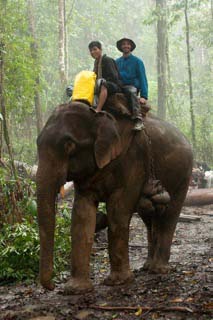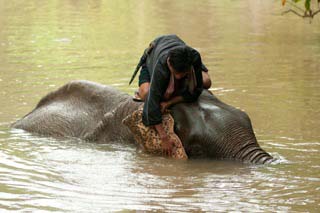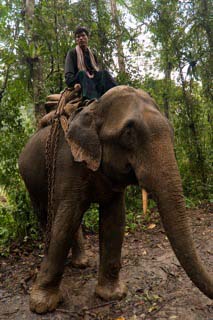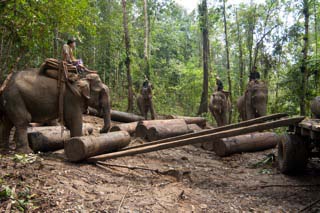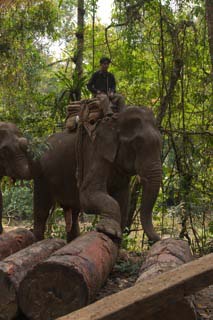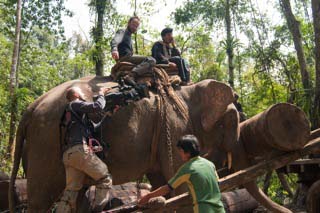Elephants in the Jungle
by Mihali Moore, Camera Assistant
I thought I had been to remote places in the past, but this trip proved that there is always somewhere further and more isolated than you think. Two flights, a long drive across politically unstable territory, a choice of a four hour trek through jungle or a three hour trip on a rickety truck. An experience that we were told (and can confirm) was like your shirt going through a tumble dryer with you still wearing it! Having trekked for a few hours, it was getting dark and the sound of the truck was music to our ears - or so we thought! After ten seconds of driving aboard, I instantly regretted it. It was terrifying. I lost count of the times I thought it was going to tip over. Perhaps the chap next to me had the right idea. Reeking of whiskey, I don’t think he was worried about anything. Luckily the truck got stuck near the camp and we gladly walked the last twenty minutes by foot. The truck would later be rescued by our pachyderm friends and brought to its final destination.
Nonetheless we arrived safe and sound in the evening to the camp that would be our home for the next two weeks. Our fixer had done an impressive job. We found a selection of individual tents with camp beds, cooking equipment, tables, lights and even power sockets in each one. Mod cons in the deep jungle. Not bad at all!
The next day we met some of the elephants for the first time and carried out a recce of the area for filming spots. I had never been this close to these animals before and was instantly struck by their majestic grace. Wary of our presence, you could tell they knew something was up. We also had the pleasure of meeting the elephant contractor. With his penchant for whiskey and the way the others behaved around him, it was clear he wanted to be perceived as the boss. During our numerous encounters with him, we would find ourselves having to respect his customs and offers of whiskey, whilst listening to his thoughts on what the world would be like without water?!? On the subject of water, it had started to rain. Monsoon season was round the corner and the chances of nicely backlit elephants working in harmony were looking slim.
It was amazing to see how these creatures worked. They can understand up to 65 commands and push heavy logs around as if they were twigs. Each elephant has its own mahout, a young man who perches atop the elephant and ‘drives’ him. Using commands and pressure with their feet, the mahout can direct, steer and command the elephant at a remarkable pace. Keeping up with them wasn’t easy and it’s clear that using the elephant is the only way to get the job done. Ramprashad was our main elephant and he was an impressive size. Whilst slightly apprehensive of us at first, he soon warmed to us and even let us ride him for a bit. In fact all the elephants seemed to accept us quite quickly. At one point I remember standing on a track in a melee of elephants that were trying to push a laden truck up a muddy slope. All I could see was wrinkly skin. I looked at Robin Cox, our cameraman, (to whom I was tethered). He was breathing in deeply and arching his back, desperately trying to fit into a gap between the dense jungle face and an elephant’s belly.
What I found remarkable is the mutual understanding between the mahout and elephant. The elephant will only work for a few hours and if it doesn’t want to do something it quite simply will not. The mahout diligently washes and feeds him each day, which strengthens the bond between the two of them. Each evening the elephant is released into the jungle to roam free. The next day the mahout must look for the animal, which, despite its freedom, won’t have gone far. The chains go on and the elephant knows it’s back to work, a true example of beast and man working in harmony. It was a real privilege to see this unique and rare tradition in action. You’ll get to get to see the reason why we were filming this partnership in 2011. Hopefully we provided a good story for the series!
